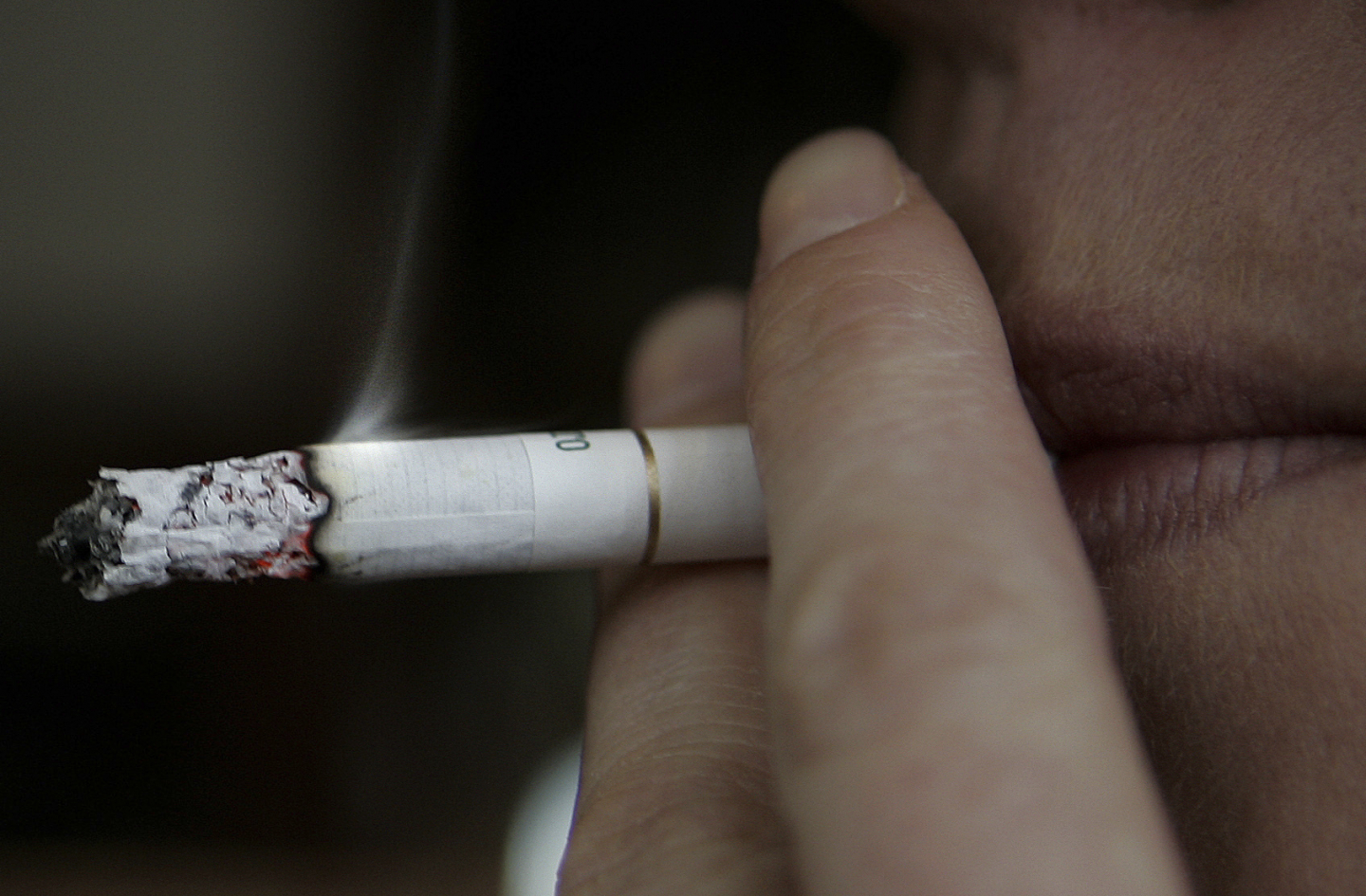Report on the Link Between Soft Drink Consumption, Mental Health, and Sustainable Development Goals
Executive Summary
A recent study published in JAMA Psychiatry establishes a significant correlation between the consumption of soft drinks and an increased risk of major depression. This report analyzes these findings, contextualizing them within the framework of the United Nations Sustainable Development Goals (SDGs), particularly SDG 3 (Good Health and Well-being). The study underscores the critical role of diet in both mental and physical health, highlighting the need for policy interventions and public education to promote responsible consumption patterns (SDG 12) and address health inequalities (SDG 5).
Study Overview and Key Findings
Methodology
Researchers in Germany conducted a study involving over 900 adult participants, approximately half of whom had been diagnosed with clinical depression. The methodology involved:
- Self-reported data on soft drink intake and mental health symptoms.
- Analysis of stool samples to assess the composition of gut bacteria.
- Comparison between a clinical depression cohort and a control group.
Principal Results
The investigation revealed a clear association between soft drink consumption and mental health outcomes. Key findings include:
- Individuals consuming more soft drinks were, on average, 8% more likely to be diagnosed with major depression and exhibit more severe symptoms.
- A pronounced gender disparity was observed, with women who regularly consumed soft drinks facing a 16% increased risk of major depression, while no significant association was found among men.
- The connection is partly explained by elevated levels of the gut bacterium Eggerthella, which has been previously linked to inflammation and is more abundant in individuals with depression.
Implications for Sustainable Development Goal 3: Good Health and Well-being
Mental Health and Non-Communicable Diseases (NCDs)
The study’s findings directly support the objectives of SDG Target 3.4, which aims to reduce premature mortality from NCDs and promote mental health. The high sugar content in soft drinks is a known contributor to obesity, diabetes, and heart disease. This research adds depression to the list of health risks, reinforcing the link between diet and the global burden of NCDs. Reducing soft drink consumption is a tangible strategy for preventing a range of physical and mental health conditions.
The Gut-Brain Axis and Holistic Health
The research highlights the importance of the gut-brain axis in maintaining overall well-being. The mechanism involves:
- Gut Microbiome Disruption: High sugar intake feeds harmful bacteria like Eggerthella, creating an imbalance in the gut ecosystem.
- Systemic Inflammation: This imbalance promotes inflammation that can affect the entire body, including the brain.
- Neurotransmitter Interference: The proliferation of certain bacteria can interfere with the production of crucial mood-regulating neurotransmitters like serotonin.
Understanding this connection is vital for developing holistic health strategies that align with SDG 3’s comprehensive vision of well-being.
Broader SDG Linkages
Gender-Specific Health Outcomes (SDG 5: Gender Equality)
The study’s identification of a significantly higher risk for women necessitates a gender-sensitive approach to public health. This aligns with SDG 5, which seeks to achieve gender equality. Addressing the factors that make women more vulnerable to the negative health impacts of soft drinks is crucial for creating equitable health policies and interventions.
Responsible Consumption and Public Education (SDG 12 & SDG 4)
The researchers’ call for policy changes and public education resonates with SDG 12 (Responsible Consumption and Production) and SDG 4 (Quality Education). Promoting healthier dietary choices is a key component of sustainable lifestyles. Educating the public, especially children and adolescents, about the comprehensive health risks associated with high sugar intake is essential for fostering informed consumer behavior and achieving long-term public health goals.
Recommendations and Conclusion
Policy and Public Health Recommendations
Based on the study’s conclusions, the following actions are recommended to advance public health and contribute to the SDGs:
- Implement public education campaigns to raise awareness about the link between sugary drinks, gut health, and mental well-being.
- Develop and enforce policies aimed at reducing the consumption of soft drinks, particularly among vulnerable populations such as children and adolescents.
- Promote further research into the gut-brain axis and sex-specific differences in dietary health impacts to create more effective, tailored prevention strategies.
Conclusion
The correlation between soft drink consumption and depression provides compelling evidence that dietary patterns are a critical determinant of mental health. This connection reinforces the indivisible nature of the Sustainable Development Goals, linking good health (SDG 3) with gender equality (SDG 5), quality education (SDG 4), and responsible consumption (SDG 12). Addressing the global consumption of sugary beverages is not merely a matter of tackling obesity but is a fundamental step toward promoting holistic well-being and achieving a sustainable future for all.
1. Which SDGs are addressed or connected to the issues highlighted in the article?
SDG 3: Good Health and Well-being
- The article’s primary focus is on the connection between the consumption of soft drinks and health issues. It directly addresses mental health by discussing a study that links soda intake to an increased likelihood of “major depression” and more “severe symptoms.” It also touches upon physical health by mentioning that soft drinks have long been “associated with obesity, diabetes and heart disease,” which are non-communicable diseases (NCDs).
SDG 5: Gender Equality
- The article highlights a gender-specific health vulnerability. The research found that the link between soft drink consumption and depression was “especially pronounced among women,” whose risk “rose by about 16%,” while there was “no significant association among men.” This points to the need for gender-disaggregated data and tailored health interventions, which is a component of ensuring health and well-being for all genders.
SDG 12: Responsible Consumption and Production
- The article calls for changes in consumption patterns to improve public health. The researchers advocate for “public education and policy changes to reduce soft drink consumption,” which directly relates to promoting sustainable and healthy consumption habits. The mention of the American Beverage Association’s efforts to offer “more choices with less sugar” also touches upon the production side of this goal.
2. What specific targets under those SDGs can be identified based on the article’s content?
SDG 3: Good Health and Well-being
- Target 3.4: By 2030, reduce by one third premature mortality from non-communicable diseases through prevention and treatment and promote mental health and well-being.
- The article directly supports this target by investigating the link between a dietary choice (soda consumption) and mental health issues (“major depression”). It also reinforces the connection between soda and NCDs like “diabetes and heart disease.” The call to reduce soft drink intake is a clear “prevention” strategy aimed at promoting both mental and physical well-being.
SDG 5: Gender Equality
- Target 5.1: End all forms of discrimination against all women and girls everywhere.
- While not about direct discrimination, the article’s finding that women are disproportionately affected by the link between soda and depression highlights a specific health vulnerability. Addressing such sex-specific differences is crucial for achieving equitable health outcomes for women, a key aspect of overall gender equality. The article states the need for “tailored prevention and intervention strategies” based on these sex-specific differences.
SDG 12: Responsible Consumption and Production
- Target 12.8: By 2030, ensure that people everywhere have the relevant information and awareness for sustainable development and lifestyles in harmony with nature.
- The researchers’ call for “public education” to mitigate depressive symptoms directly aligns with this target. The goal is to provide the public with information about the health impacts of their consumption choices, enabling them to make more informed decisions for a healthier lifestyle.
3. Are there any indicators mentioned or implied in the article that can be used to measure progress towards the identified targets?
Indicators for SDG 3 (Good Health and Well-being)
- Prevalence and risk of depression: The article provides specific quantitative data that can be used as indicators, such as consumers of soft drinks being “8% more likely to be diagnosed with major depression” and women who consume them regularly having their risk rise by “about 16%.”
- Severity of mental health symptoms: The study found that soft drink consumption was associated with “symptom severity,” which could be measured on clinical scales.
- Prevalence of NCD risk factors: The article mentions that “around 10% of children and adolescents consume soft drinks every day, which is clearly associated with weight gain, obesity, diabetes [and] fatty liver disease.” The consumption rate itself is an indicator of risk.
- Biological markers: The study analyzed “stool samples to assess their gut bacteria” and identified “higher levels of a gut bacterium called Eggerthella” as a potential biological indicator of the link between soda and depression.
Indicators for SDG 5 (Gender Equality)
- Sex-disaggregated health data: The article provides a clear example of this by reporting different outcomes for men and women. The finding of a “16%” increased risk for women versus “no significant association among men” serves as an indicator of a gender-specific health issue that requires monitoring.
Indicators for SDG 12 (Responsible Consumption and Production)
- Consumption rates of sugary drinks: The article provides a specific statistic: “around 10% of children and adolescents consume soft drinks every day.” Tracking this percentage over time would measure progress in changing consumption patterns.
- Public awareness levels: The call for “public education” implies the need to measure public understanding of the health risks associated with soft drinks through surveys and other tools.
- Implementation of public health policies: The recommendation for “policy changes to reduce soft drink consumption” implies that an indicator of progress would be the number and effectiveness of such policies being enacted.
4. Create a table with three columns titled ‘SDGs, Targets and Indicators” to present the findings from analyzing the article.
| SDGs | Targets | Indicators |
|---|---|---|
| SDG 3: Good Health and Well-being | 3.4: Reduce mortality from non-communicable diseases (NCDs) and promote mental health and well-being. |
|
| SDG 5: Gender Equality | 5.1: End all forms of discrimination against all women and girls everywhere. |
|
| SDG 12: Responsible Consumption and Production | 12.8: Ensure people have relevant information and awareness for sustainable lifestyles. |
|
Source: foxnews.com







